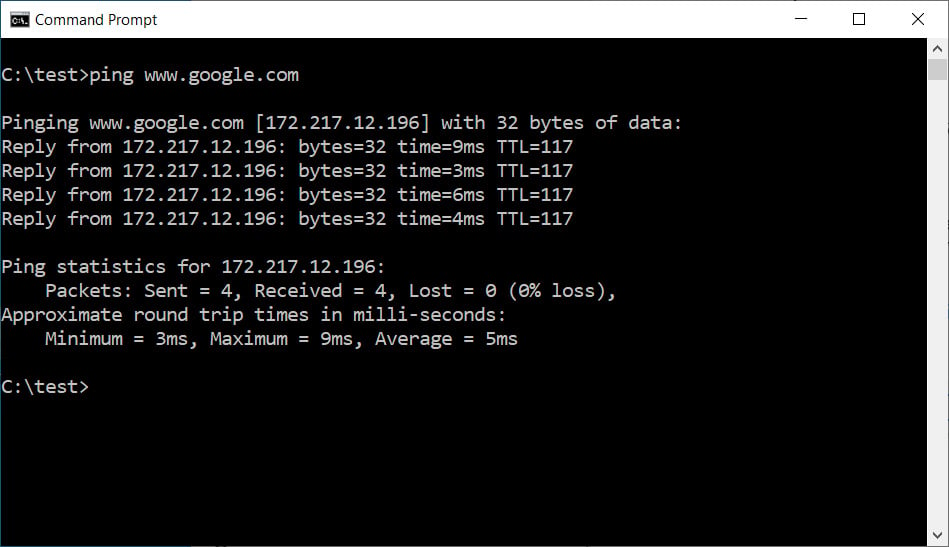
- How to use telnet to test port 443 how to#
- How to use telnet to test port 443 install#
- How to use telnet to test port 443 windows#
This entry was posted in Miscellaneous by Matt. On the Console machine, Open PowerShell Window.
How to use telnet to test port 443 windows#
Gnutls-cli is present on my Mac, but not on a CentOS box. You can also test connectivity with Windows PowerShell. I was confirming that my browser wasn’t insane, and that really was down at the time.) (The “Cannot connect” error is not erroneous.
Enter the command: telnetOpen the command prompt: Windows: Select Start.

How to use telnet to test port 443 install#
Install Telnet if it is not already installed. If you’ve got gnutls installed, it’s even easier: Matthew.Wagner ~ $ gnutls-cli Ĭannot connect to 98.139.21.169:443: Operation timed out How do I use Telnet to test a port in Linux Telnet. For this article I’ve created 4 porttest services to test ports 80, 8080, 443, and 1494. Thanks to a fellow Matt, at, for this great suggestion. Port the port you’re trying to test-Server the IP address of the server you’re trying to hit.
Test-NetConnectionYou can use your classic dialog, e.g., GET / HTTP/1.1Īnd you’ll get the expected response. In order to ping a specific port using Powershell, you have to use the Test-NetConnection command followed by the IP address and the port number to be pinged. This will output a ton of SSL information, but then you’re in the equivalent of a telnet session, tunneled through a secure connection. Verify error:num=20:unable to get local issuer certificate Matthew.Wagner ~ $ openssl s_client -connect ma.:443ĭepth=1 /C=BE/O=GlobalSign nv-sa/CN=GlobalSign Organization Validation CA - G2 This is the more common one: use the s_client option on the OpenSSL CLI tool. It turns out you have two options (at least), but neither involves using telnet. But, of course, that won’t work for HTTPS sites, because you’re expected to set up an SSL connection, not send HTTP commands. Server: Apache/1.3.27 (Unix) (Red-Hat/Linux) mod_ssl/2.8.12 OpenSSL/0.9.6 PHP/4.1.2 mod_perl/1.27 FrontPage/5.Testing websites, it’s sometimes beneficial to just telnet 80 and speak HTTP. INPUT: GET /index.htm HTTP/1.1 host: Notes:ġ) no OS cursor caret, the connection is open so you just get a blank line waiting for input. I can get it to work fine with a single port listed, it will test that port on all servers in the list but cant get it to work to test the listed port on the listed server. Note: this launches telnet and tells it to look up and connect to the server for "on port 80. In this example I want to test Port 80 on 10.1.2.3 - port 443 on 10.1.2.4 and port 8080 on 10.1.2.5.

( Though if you are using Windows, you may want to use something like CYGWIN, or Putty rather than the DOS prompt). For example, if you are using Windows, Start -> Run -> cmd. Here is a simple example making an HTTP 1.1 request.

This allows you to see headers and collect other information related to the web server. Troubleshooting HTTP using telnet is a great way to review exactly what is getting returned to your browser during a web request for a particular url. More specifically, telnet can be used to test HTTP scenarios, effectively stripping through all the friendly layers a browser usually hides from web visitor eyes. The reason why this protocol is useful to connect to. Accept host key If this is the first time. The telnet program, which is not the Telnet protocol, can be useful to test port states which is the functionality this tutorial explains. Select protocol Enter ‘ ’ in the field for ‘Host Name (or IP address)’ and select ‘SSH’ or ‘Telnet’ as Protocol and simply press open button. Telnet Port Check Command Description telnet 192.168.1.1 80: Check remote HTTP (80) port: telnet 192.168.1.1 443: Check remote HTTPS (443) port: telnet 192.168.1.1 23: Check remote Telnet(23) port: telnet 192.168.1.1 21: Check remote FTP(21) port: telnet 192.168.1.1 25: Check remote SMTP(25) port: telnet 192.168.1.1 143: Check remote IMAP(143) port: telnet 192.168.1. This process involves using a TELNET tool through a DOS Command Prompt to test whether a connected device can access the AlarmNet360 Servers used by Total Connect 2.0.
How to use telnet to test port 443 how to#



 0 kommentar(er)
0 kommentar(er)
